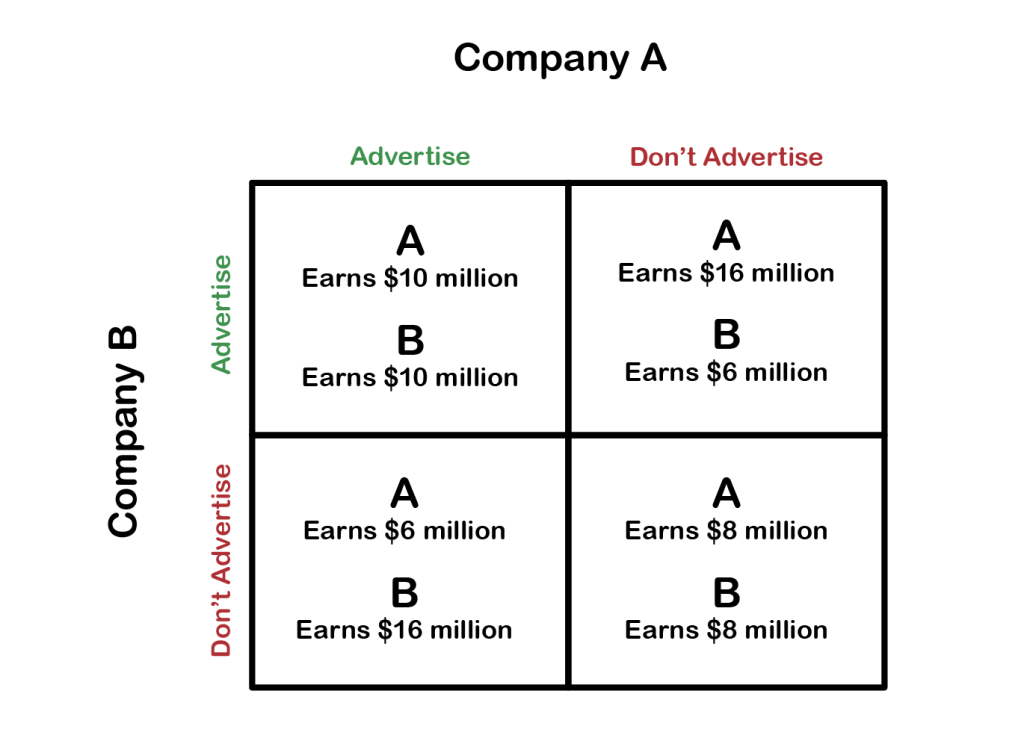11.5: A Duopoly Game

Here we have another example of a prisoner’s dilemma game. The table in Fig 11.3 above shows the payoff matrix of a duopoly game with two players A and B thinking of a strategy whether to advertise or not advertise. If company A decides to advertise, and company B also advertises, company B earns $16 million profit. If company A doesn’t advertise and company B also doesn’t, then company B earns $8 million profit. Therefore, the dominant strategy for company B, regardless of what A does, is to NOT advertise, because by not advertising company B earns higher profits, as shown by the payoffs.
Similarly, company A’s dominant strategy, regardless of what company B does, is to NOT advertise. The Nash equilibrium is shown on the bottom right box where both firms don’t advertise and earn $8 million profit each.
The result of this prisoner’s dilemma is often that even though A and B could make the highest combined profits by cooperating in advertising, the two firms may well end up in a situation where they neither advertise and earn only $8 million each in profits.
Attribution
10.2 Oligopoly” in Principles of Economics 2e by OpenStax is licensed under Creative Commons Attribution 4.0 International License.
“Prisoner’s Dilemma” in Microeconomics by Lumen Learning is licensed under a Creative Commons Attribution 4.0 International License, except where otherwise noted.

